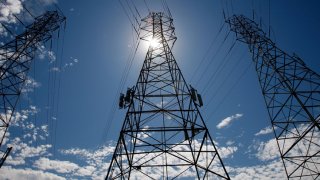
A report on the state’s mid-August statewide grid meltdown shows it was triggered when the state’s independent grid manager mistakenly allowed more than 4,000 megawatts of power to be exported from the system at the crucial moment of peak heatwave demand.
Just why the state’s grid managers allowed power to be sold off during the crisis is not fully explained in the more than 110-page report. Officially, the California Independent Systems Operator blames the blackouts on a record high heat and a lack of planning.
“There was no single root cause of the outages, but rather, a series of factors that all contributed to the emergency," according to a letter sent Tuesday and signed by the new president and CEO of Cal ISO, Elliot Mainzer, as well as the heads of the state’s energy regulatory agencies.
Calling the meltdown an “extraordinary event,” the letter accompanying the root cause report concluded “it is our responsibility and intent to plan for such events, which are becoming increasingly common in a world rapidly being impacted by climate change."
The report calls for more supply to make up for any gaps, especially in light of the predictable loss of solar power in early evening hours.
But the Investigative Unit’s analysis of data and details of the actual report reveals Cal ISO accurately anticipated the high power demand for both Aug. 14 and 15.
What grid operators got wrong, according to the report, involved misreading the level of demand based on the activity of the energy markets. Managers mistook that activity as suggesting demand would be lower than Cal ISO’s own forecast, which was based on weather, not market conditions. That flawed analysis led it to permit outside systems to buy up some 4,000 megawatts of power at the virtual moment the demand was highest on the evening of Aug. 14, according to data provided in the report.
Local
The selloff left the state critically low on power and triggered rolling outages.
“They knew it was a horrible heatwave and they allowed 4,000 megawatts of exports anyway,” said Loretta Lynch, former president of the Public Utilities Commission and a frequent critic of both Cal ISO and the state’s energy regulatory structure.
On top of that, the managers’ reliance of a reading of the market in lieu of heeding the forecast demand led them to approve the maintenance shutdown of plants that would otherwise generate more than 400 megawatts in extra power at the critical moment, the report suggested.
Lynch pointed to charts in the ISO root cause analysis as revealing the state’s available power had been undercut at three critical times due to the peak selloff of between 2,000 and 4,000 megawatts out of state.
“They admitted they didn’t follow their own forecast and they were caught short,’’ Lynch said, “and they blacked out California.”



